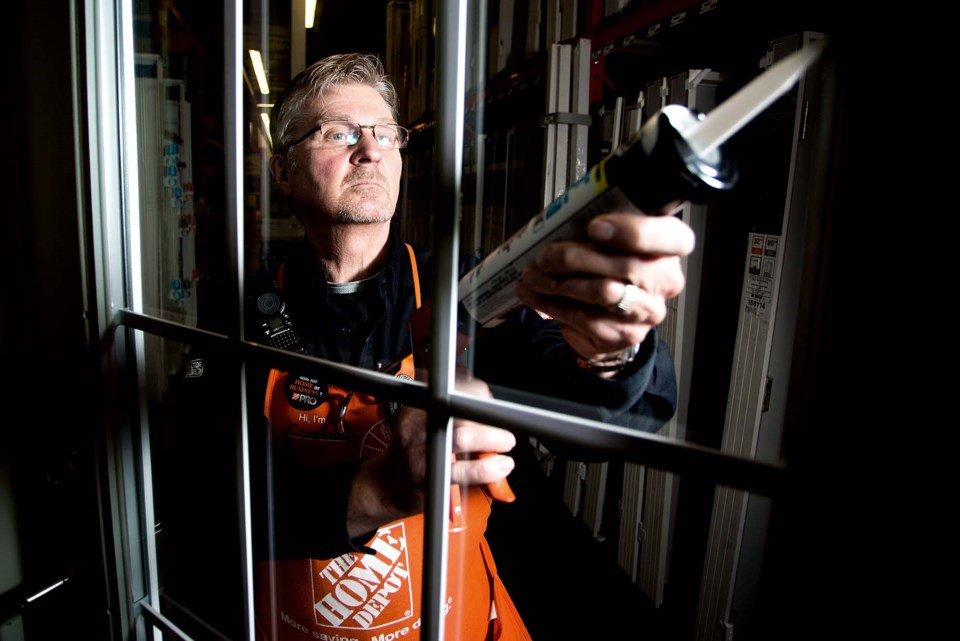This Green House
The Gazette is taking a close look at green retrofits you can fund with CEIP grants. Got a question about retrofits? Email them to [email protected]
Every day when I walk past the front door of my condo complex and see that radiator blasting hot air right through that big gap in the door’s weather stripping, I can’t help but think, “What a waste!” That radiator is burning fossil fuels to make hot air which leaks through that gap, costing me money and contributing to a wilder, more dangerous climate.
If we as humans want to head off a future of more drought, floods, fires, and heat waves, researchers agree that we need to get our greenhouse gas emissions down to zero as soon as possible. And with 18 per cent of Canada’s emissions coming from buildings, our homes are a great place to start.
St. Albert’s efforts to green its homes got supercharged on Nov. 22 with the launch of the Clean Energy Improvement Program (CEIP), which lets homeowners get oft-expensive home energy retrofits for no money down. Starting this week, I’m taking a closer look at how you can green your home with (and without) CEIP to help your planet and your pocketbook.
The first steps
The first step to a greener home is an EnerGuide energy audit. St. Albert’s CEIP and the federal Greener Homes grants require one, and those audits give you a cost-benefit run-down on improvements you can make to your home. St. Albert residents can get $650 from CEIP and up to $600 from Greener Homes to pay for these audits.
Once you have that audit, it’s vital to plan your upgrades out so that you can get to net-zero emissions as cheaply as possible, said net-zero home designer Peter Amerongen. You don’t want to have to take out attic insulation to put in better air-sealing, as he recently had to do for one of his clients.
The first step you should take to get your home to net-zero is to reduce its energy needs, said Robert Prybysh, St. Albert resident and engineer with Arrow Engineering. That process starts with air-sealing.
“Whenever cold air leaks into your building, warm air leaks out,” he said — you’re not only losing hot air, but you’re getting another load of cold to heat up.
Most homes have the equivalent of a hole the size of a soccer ball in their walls once you add up all the leaks in them, said Godo Stoyke of Carbon Busters. While a super-efficient home might have 0.6 air-changes per hour (i.e. it replaces 60 per cent of its air each hour), older ones average about 10, with each change requiring a whole home’s worth of air to be heated or cooled.
Plugging leaks is something most people can do on their own, Stoyke said. Use an infrared camera (available in the St. Albert Public Library’s HEAT kits) or a feather on a stick to find leaks, paying particular attention to windows, doors, and power outlets. Look for worn weather stripping and listen for banging backdraft dampers on windy days, Prybysh added. Next, fix the leaks with caulking, weighted dampers, vapour barriers, and weather stripping.
To plug less obvious leaks, you’ll need to apply an exterior home wrap — a $30,000 to $50,000 process that might not even be worth doing if you have a super-insulated house, Stoyke said.
“Sometimes, it’s just cheaper to get another solar module than to retrofit.”
Stoyke and Prybysh say to consider home wraps only if you’re already opening up your walls to add insulation or replace windows.
“It is a big upgrade, but it can substantially help the comfort of your home,” Prybysh said of the home wrap.
The Greener Homes grant offers up to $1,000 for air-sealing, which is also eligible for CEIP funding.
Air-sealing can have a very swift payback. In his Carbon Buster’s Home Energy Handbook, Stoyke estimates that about $230 worth of basic leak sealing will pay for itself in about 1.3 years and (at 2007 prices) save you $855 after five years, while also preventing about three tonnes of greenhouse gas emissions.
There’s also an immediate payback in the form of comfort. I stuffed five bucks worth of weather stripping into my balcony door last summer, and my office was immediately less drafty.
Now, if only I could do something about that front door…
Green Actions
Action: air-seal your home
Cost: $230, less if you do it yourself
Payback: 1.3 years (at 2007 gas prices)
Savings: $855 and 3 tonnes CO2 after five years
Greener Homes rebates: up to $1,000
CEIP eligible: Yes




